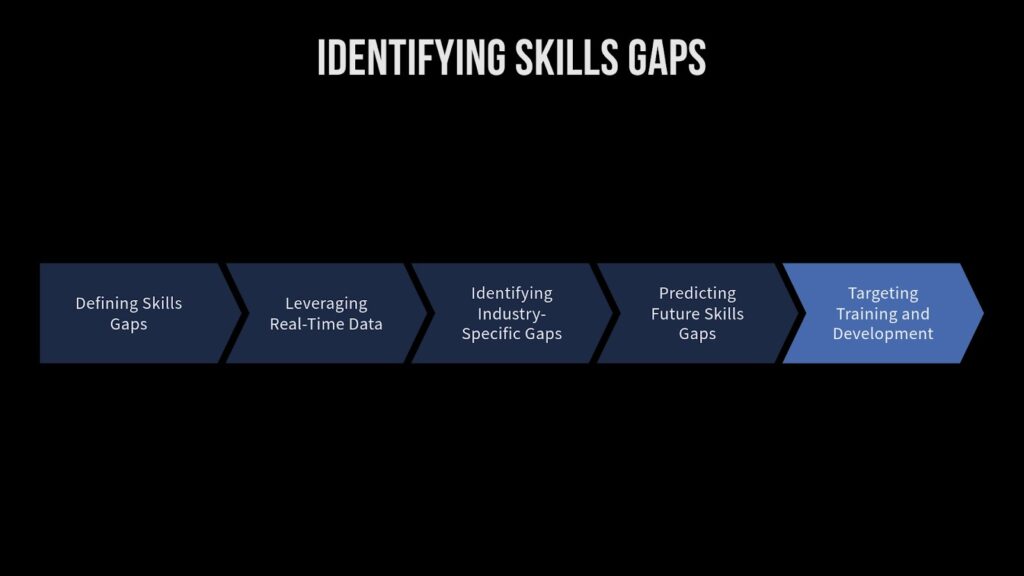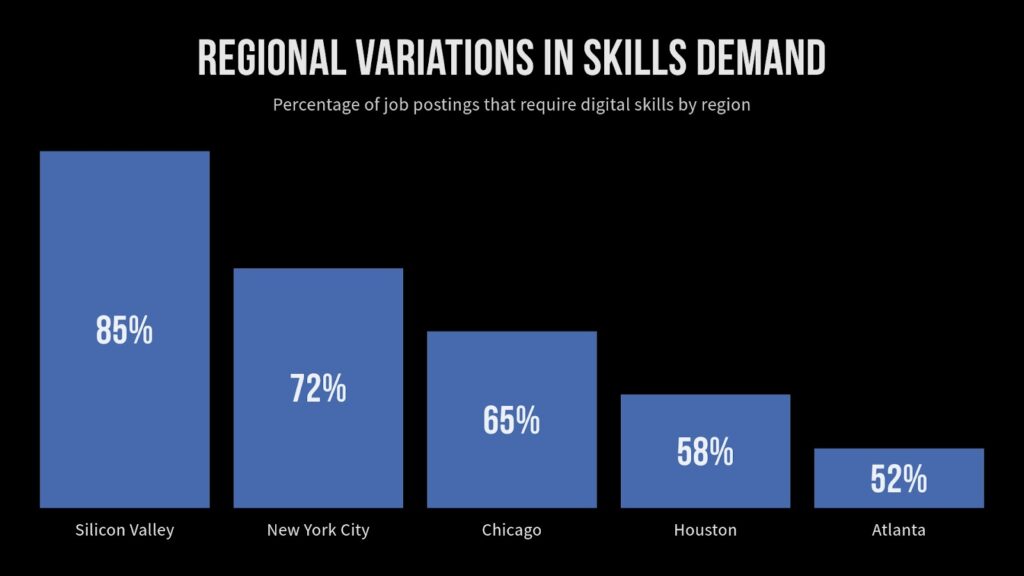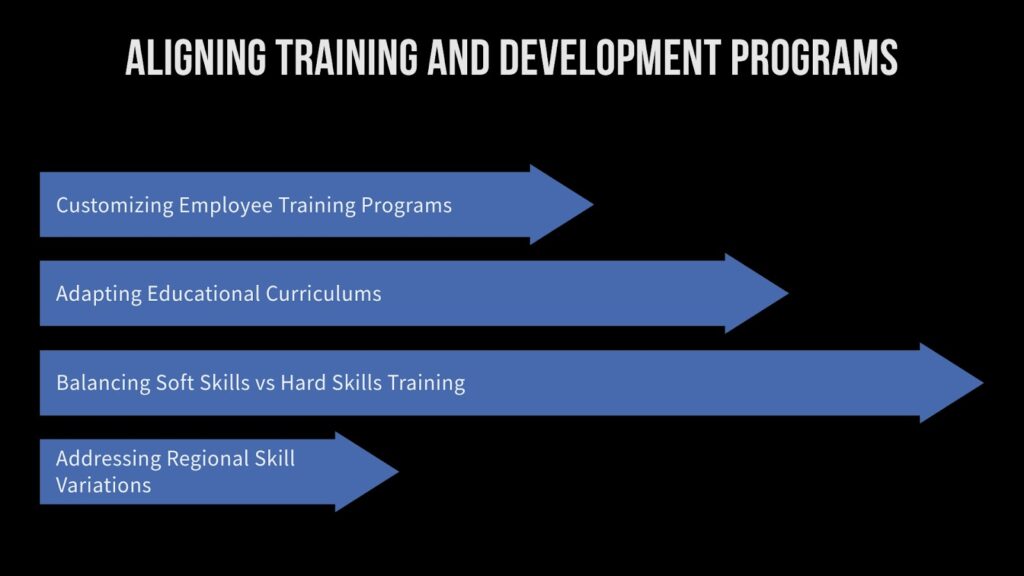In today’s fast-changing job market, a clear understanding of the fluctuating demand for the kinds of skills must organizations and educational institutions have become critical with industries under digital transformation and economic conditions changes, skills for a job may not always be those needed just years ago.Labor market insight tools are emerging as a precious resource for identifying in-demand skills; they enable organizations and educational institutions both to change their workforce policies change with the needs of markets now ahead of time.In this article, we will show you how to use labor market insight tools to distinguish these emerging trends, so that businesses and educational providers can stay ahead of the curve.
What Are the Key Skills for a Job? Why Are They Important?
In order to understand the role of labor market insight tools, let first define what skills are and why they matter. In the context of the job market, skills can be defined as the abilities, knowledge, and expertise an individual needs for a job or a position. Skills can be broadly categorized into two main types:
- Hard skills: These are technical skills that are specific to a job or industry. They are often quantifiable and can be measured, such as coding, accounting, or machine operation.
- Soft skills: These are interpersonal or behavioral skills that help individuals work well with others. They include communication, teamwork, and problem-solving abilities. Understanding the balance between soft skills vs hard skills is critical for HR professionals, as both types contribute to an employee’s overall effectiveness.
For organizations, having employees with the right blend of skills for a job is key to driving productivity, innovation, and growth. In contrast, educational institutions need to ensure they are equipping their students with good skills to have for a job, so they remain competitive in the job market. This is where labor market insight tools come into play.
How Labor Market Insight Tools Help You Identify the Right Skills?
Labor market insight tools leverage big data and advanced analytics to track and analyze job postings, industry trends, and economic shifts. These tools collect data from a variety of sources, including job boards, employer surveys, government databases, and social media platforms. By analyzing this data, the tools can provide valuable insights into which skills are in high demand across different sectors and regions.
Here’s how labor market insight tools can be used to identify in-demand skills and improve workforce planning:
1. Real-Time Data on Skills Demand
One of the primary advantages of labor market insight tools is their ability to provide real-time data on the current demand for skills. This means organizations can quickly adapt to changing market conditions by focusing on skills for a job that are most relevant at any given time. For example, in recent years, the demand for digital skills, such as data analysis, cloud computing, and cybersecurity, has skyrocketed as companies shift toward digital operations. Labor market tools can help pinpoint these emerging trends and guide HR teams to prioritize these areas when hiring or training employees.
2. Industry-Specific Skill Requirements
Different industries have varying skill needs, and labor market insight tools can provide a breakdown of good skills to have for a job in each sector. For instance, the healthcare industry may be experiencing a surge in demand for clinical skills related to telemedicine, while the finance sector could be looking for expertise in blockchain technology. By understanding the specific skills required in their industry, HR teams can ensure their recruitment efforts are aligned with the most up-to-date market requirements.
3. Identifying Skills Gaps

Labor market insight tools are also highly effective in identifying skills gaps within the workforce. Skills gaps occur when there is a mismatch between the skills workers possess and the skills employers need. By analyzing data on job vacancies and the qualifications of job seekers, these tools can highlight where the largest gaps exist. This enables organizations to target their training and development efforts more effectively. For instance, if there’s a shortage of workers with strong soft skills vs hard skills In leadership roles, companies can invest in leadership training programs to bridge that gap.
4. Predicting Future Skills Needs
In addition to analyzing current trends, labor market insight tools can predict future skills needs based on long-term industry developments. For example, the increasing adoption of artificial intelligence (AI) and automation is expected to lead to growing demand for skills in AI development, machine learning, and robotics. By using predictive analytics, organizations and educational institutions can begin preparing their workforce for the skills that will be in demand in the coming years, ensuring they remain competitive.
5. Regional Variations in Skills Demand

The demand for certain skills can vary significantly by region, depending on the local economy, industry presence, and workforce demographics. Labor market insight tools allow organizations to customize their recruitment and training strategies based on regional data. For example, technology-related skills for a job may be more in demand in Silicon Valley, while manufacturing skills may be more relevant in the Midwest. Understanding these regional differences enables HR professionals to make informed decisions about where to source talent and how to tailor development programs.
How to Align Training with Market Needs for In-Demand Job Skills?
Labor market insight tools are not only beneficial for identifying in-demand skills but also for aligning training and development programs with current market needs. Both organizations and educational institutions can use these insights to create programs that equip workers and students with the good skills to have for a job in today’s market.

1. Customizing Employee Training Programs
For organizations, labor market insight tools can help tailor employee training programs to focus on the skills that are most critical to the company’s success. For instance, if an organization identifies a need for data analysis skills, it can create customized training programs to upskill its employees in data science and analytics. This proactive approach helps companies stay competitive and reduces the need for costly external hires.
2. Adapting Educational Curriculums
Educational institutions can also benefit from labor market insights by adjusting their curriculums to focus on the skills for a job that are most in demand. By aligning educational programs with current market trends, institutions can ensure their graduates are better prepared to meet the needs of employers. For example, colleges and universities might introduce courses on AI, digital marketing, or cybersecurity to meet the growing demand for technology-related skills.
3. Soft Skills vs Hard Skills Training
As the job market evolves, the balance between soft skills vs hard skills becomes more crucial. While technical proficiency (hard skills) is essential, employers increasingly value soft skills like communication, emotional intelligence, and adaptability. Labor market insight tools can help organizations and institutions identify which soft skills are becoming more critical in specific industries, enabling them to integrate these into their training and development programs. This comprehensive approach ensures that workers not only possess the technical knowledge required but also the interpersonal skills that contribute to long-term success.
Conclusion:
In the fast-paced world of work, staying ahead of the competition requires a deep understanding of the skills that are most in demand. Labor market insight tools provide HR professionals and educational institutions with the data they need to identify emerging trends, fill skills gaps, and tailor their programs to the evolving needs of the job market.
By using these tools to analyze skills for a job, organizations can optimize their recruitment strategies and ensure their employees are equipped with good skills to have for a job. Similarly, educational providers can ensure their curriculums are aligned with current market demands, producing graduates who are ready to thrive in today’s competitive landscape.
As technology continues to reshape industries, the need for up-to-date labor market insights will only grow. By leveraging these tools effectively, HR tech companies and other stakeholders can unlock the full potential of the workforce, ensuring they remain agile, innovative, and prepared for the future of work. Sign-up with JobsPikr to access labor market insight.
Frequently Asked Questions (FAQs)
1. What are labor market insight tools?
Labor market insight tools use data analytics to provide information on job trends, emerging skills, and workforce demands. These tools analyze data from multiple sources to help organizations and educational institutions identify current and future skills needs.
2. How can labor market insight tools benefit HR professionals?
HR professionals can use labor market insight tools to align their recruitment and training strategies with market demands. By identifying which skills for a job are most in-demand, they can focus on hiring and developing employees with relevant expertise.
3. What is the difference between soft skills vs hard skills?
Hard skills are technical, job-specific abilities like coding or accounting, while soft skills refer to interpersonal qualities like communication and teamwork. Both types of skills are crucial in today’s job market, and labor market insight tools can help identify the right balance between them.
By fully utilizing labor market insight tools, organizations can unlock workforce potential, providing their employees with good skills to have for a job that will drive long-term success.



